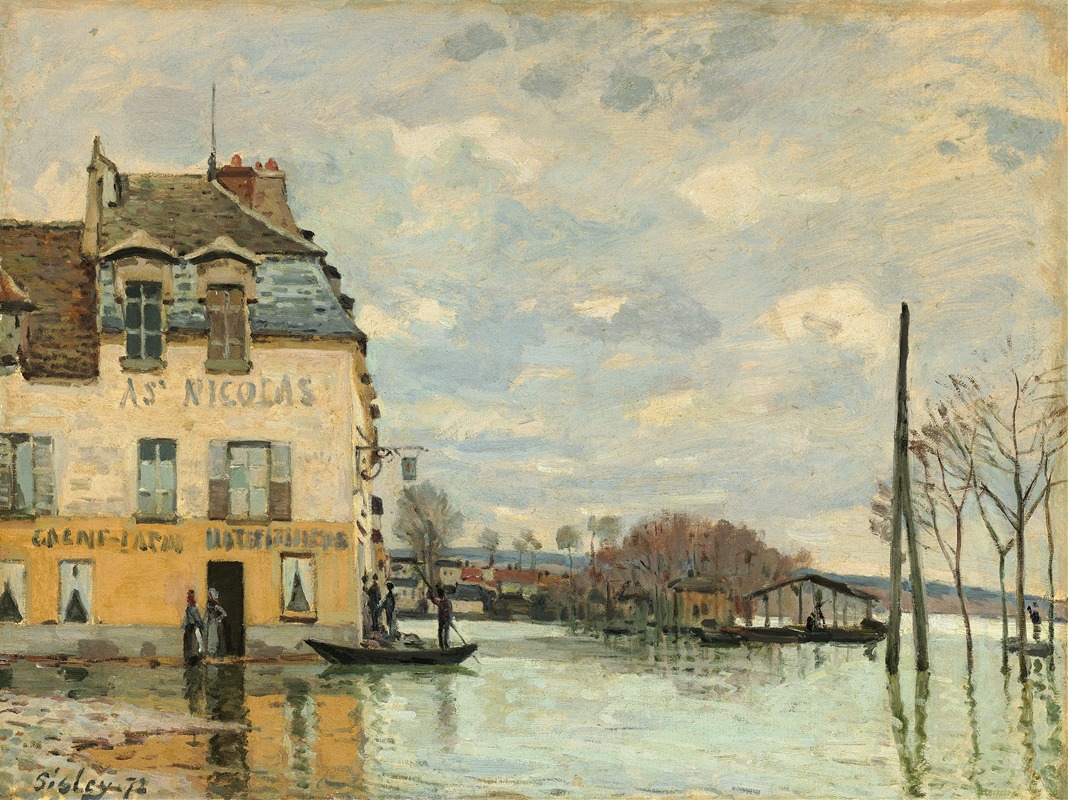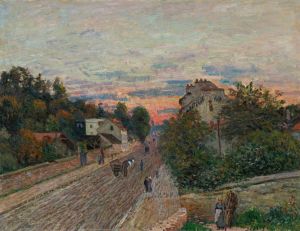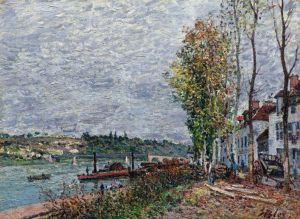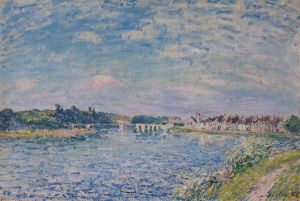
Flood at Port-Marly
A hand-painted replica of Alfred Sisley’s masterpiece Flood at Port-Marly, meticulously crafted by professional artists to capture the true essence of the original. Each piece is created with museum-quality canvas and rare mineral pigments, carefully painted by experienced artists with delicate brushstrokes and rich, layered colors to perfectly recreate the texture of the original artwork. Unlike machine-printed reproductions, this hand-painted version brings the painting to life, infused with the artist’s emotions and skill in every stroke. Whether for personal collection or home decoration, it instantly elevates the artistic atmosphere of any space.
"Flood at Port-Marly" is a renowned painting by the French Impressionist artist Alfred Sisley, created in 1876. Sisley, who was born in Paris to British parents, is celebrated for his landscape paintings and his dedication to the Impressionist movement. His works are characterized by their delicate brushwork and the ability to capture the transient effects of light and atmosphere.
The painting "Flood at Port-Marly" is part of a series of works that Sisley produced during the 1870s, focusing on the theme of flooding in the small town of Port-Marly, located along the Seine River near Paris. This series is notable for its depiction of the natural phenomenon of flooding, which was a recurring event in the area due to the Seine's propensity to overflow its banks.
In "Flood at Port-Marly," Sisley captures the inundation of the town with a keen eye for detail and a subtle use of color. The painting portrays the flooded streets and the reflections of the buildings and trees in the water, creating a serene yet poignant scene. The composition is balanced, with the water occupying a significant portion of the canvas, emphasizing the impact of the flood on the town's daily life.
Sisley's technique in this painting exemplifies the Impressionist style, with loose brushstrokes and a focus on the effects of light. The artist's palette is dominated by soft blues, greens, and grays, which convey the overcast sky and the calmness of the water. The reflections in the water are rendered with a delicate touch, demonstrating Sisley's skill in capturing the ephemeral qualities of the scene.
The choice of subject matter in "Flood at Port-Marly" reflects Sisley's interest in the interaction between human habitation and nature. The flooding of Port-Marly was not only a natural event but also a moment that disrupted the lives of the town's inhabitants. Sisley's painting captures this intersection, offering a glimpse into the resilience of the community and the beauty that can be found in such moments of adversity.
Alfred Sisley's work, including "Flood at Port-Marly," was not widely recognized during his lifetime, as he struggled with financial difficulties and did not achieve the same level of fame as some of his contemporaries, such as Claude Monet and Pierre-Auguste Renoir. However, his contributions to the Impressionist movement have been increasingly appreciated over time, and his paintings are now celebrated for their lyrical beauty and technical mastery.
Today, "Flood at Port-Marly" is housed in the Musée d'Orsay in Paris, where it continues to be admired by art enthusiasts and scholars alike. The painting is a testament to Sisley's ability to transform a simple landscape into a work of art that resonates with viewers, capturing both the tranquility and the underlying tension of a town submerged by water. Sisley's portrayal of Port-Marly remains a significant example of Impressionist landscape painting, highlighting the artist's dedication to capturing the fleeting moments of nature and the world around him.


















